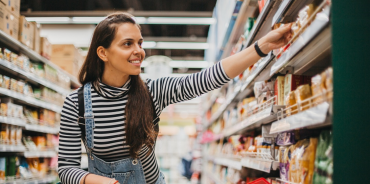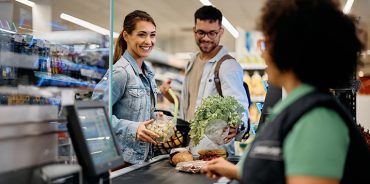The year ahead: Retail trend predictions for 2022
This year’s predictions have taken longer than normal to pull together. As pandemic restrictions begin to lift in many countries worldwide, we are now witnessing a new crisis unfolding with the conflict in Ukraine. Whilst the full global impact of the war is yet to be seen, it’s already clear that 2022 is yet another year that will be hard to predict.
As I wrote early on in the pandemic, the longer it lasted the harder it would be to undo some of these newfound habits or lifestyle changes. A recent report by Hero Digital predicted 22% growth in grocery ecommerce and that, for the younger generations, shopping that way was becoming “second nature”. And according to a recent survey by the American Psychiatric Association, nearly half of Americans want to continue to use telehealth after the “pandemic era”.
We discovered many new lifestyle changes that we would like to keep and several others we would like to stop. In retail, ecommerce will continue to grow, but there are also several other trends that may finally get their breakthrough:
Investment in supply chain automation explodes
“We don’t have a problem with farms producing enough food. We have problems with not enough labour in the supply chains between the farms and the consumers,” says Paul Lightfoot, president and founder of BrightFarms.
This shortage of skilled professionals – in tandem with the huge growth of online grocery – has led to what McKinsey suggests will be a tipping point for supply chain automation. With the cost of automation technologies falling and the dynamics of online grocery continuing to evolve, 2022 looks set to be the year in which investment explodes.
What does that look like in real terms? A significant outlay, by all accounts. In 2020, the average per warehouse automation cost stood at £350,000 in the UK, and $375,750 in the US. Extrapolate that across every distribution centre in those countries, and a bumper year appears to beckon for the robotics industry.
Physical goods and digital content collide
Ready, buyer one? Whatever your thoughts on Mark Zuckerberg’s concept of the metaverse – and thoughts there most definitely are – there’s no denying the inherent potential for marketers and advertisers. And thanks to Meta’s own Project Cambria, we now have some idea of how that potential might soon play out.
Cambria, a mixed reality headset expected to launch later this year, will allow brands to deliver advertisements and other messages via augmented reality overlays. Theoretically, a Cambria wearer could enter a participating store and have the shelves spring into life with an abundance of interactive digital content; that’s what Meta has been pitching advertising agencies, at least.
It’s an undeniably interesting concept, and one that might gain ground relatively quickly if it can attract sufficient buy-in from brands and retailers. Whether shoppers are ready to embrace it is another question, of course; hard work will need to be done to ensure that it offers genuine benefit for users.
Shoppers put a price on personal data
Like the metaverse, the blockchain is an idea that attracts its fair share of polarizing opinions. Blockchain does do some things very well however, security, traceability, and transparency amongst them.
That has big implications for personal data, particularly when combined with the concept of decentralised identity (DI) – an evolving idea that could give people much greater control about what they share with third-parties like retailers and advertisers.
While conversations around DI are currently focused primarily on privacy, the potential is there for shoppers to enjoy not just greater agency over their data, but for them to actually monetise it too – selling their information to advertisers as and when it suits them.
Will that be the case by the end of 2022? Perhaps not, but don’t be surprised to see some significant steps in that direction: the Decentralised Identity Forum already has representation from both Microsoft and Workday.
Shifting populations point to long term change
There was a time, not too long ago in fact, where choosing where we worked also meant choosing where we lived. For many employees, that’s no longer the case, with the past two years serving as real life proof of remote working’s possibilities.
For retailers, that presents an interesting question: when shoppers are no longer tied to cities and urban centres as they once were, how does the existing grocery model need to evolve? How to do they continue to serve people over what may be a much broader geographic spread?
Like most of the issues that have emerged during the pandemic, there are no easy answers here. Online will clearly play a significant role, but so too will factors like store footprint and the supply chain. As we’ve seen at Tesco in the UK, a focus on distributed, rather than centralised innovation, is likely to pay dividends.
Food waste comes to the fore as uncertainty continues
America currently wastes between 30 and 40 percent of its food. That shocking figure, an unacceptable reality at the best of times, becomes even more unpalatable given growing concern around inflation, the environment, and food poverty.
Though a significant amount of that wastage occurs along the supply chain (20bn pounds of fresh produce is lost on farms every year, for instance), the vast majority happens once food has already found its way into the hands of the consumer.
Much as it might sound like one, that’s not solely a problem on the part of shoppers. The primary causes of household food waste include spoilage, over-serving, confusion over date labels, and overbuying – all issues that retailers and their CPG partners can aid with.
While the ultimate decision about what to buy and when to use it will continue to lie with the customer, retailers and suppliers are likely to find themselves under growing pressure to help shoppers make smarter choices about how they shop.
TOPICS
RELATED PRODUCTS
Amplify Customer understanding to create strategies that drive results
Customer First solutionsThe latest insights from our experts around the world



